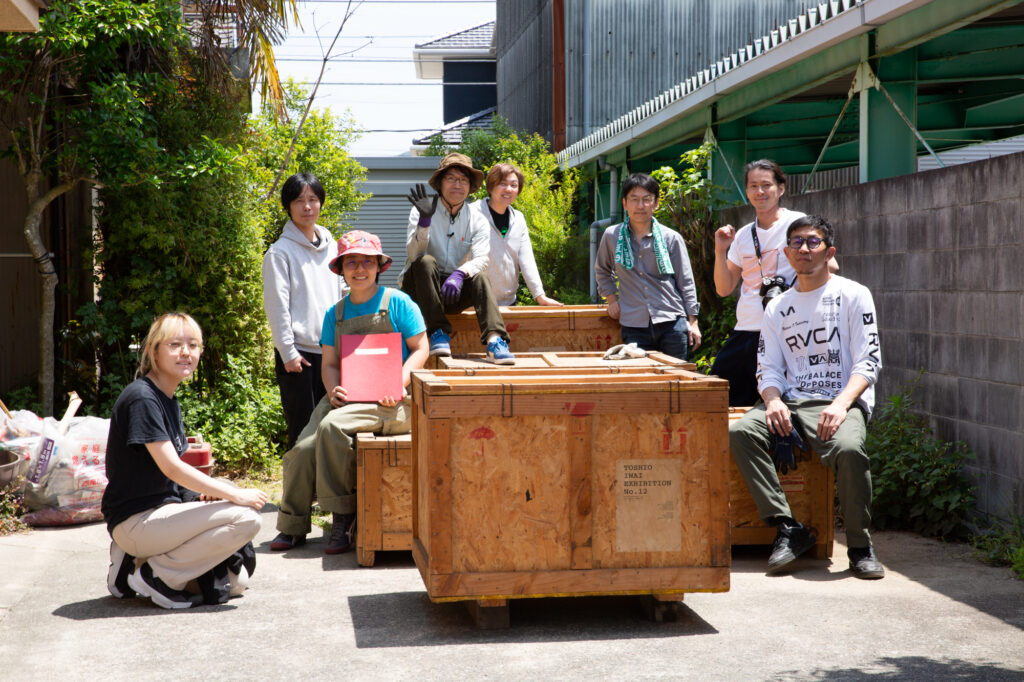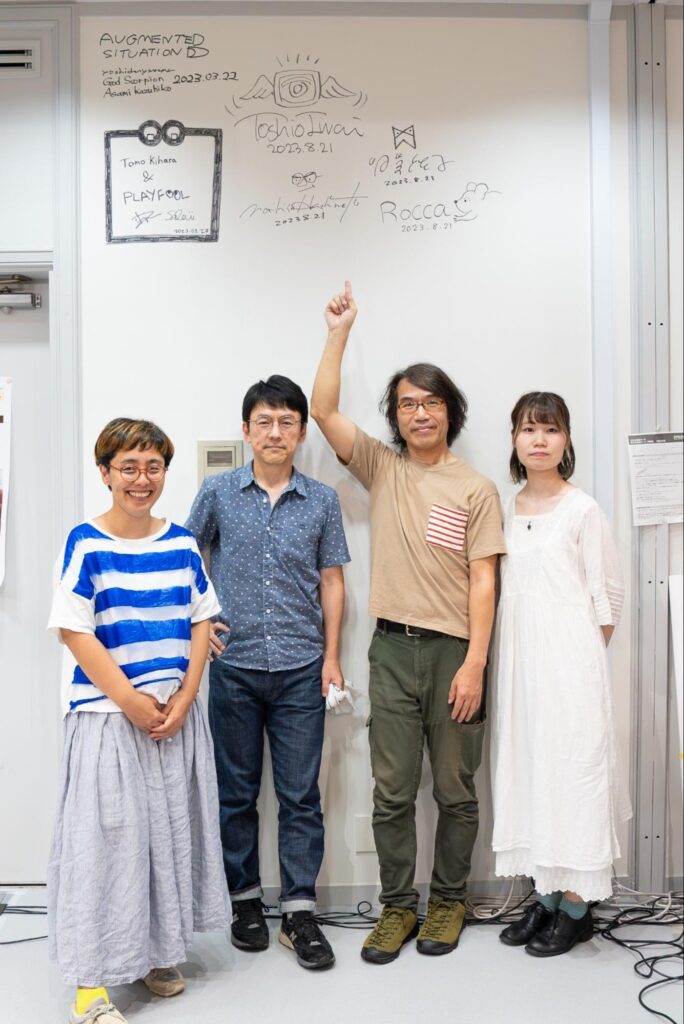Media Art Studies 2023: Playing with Your Eyes was held at Civic Creative Base Tokyo from July 7 to August 20, 2023, directed by Iwai Toshio. The program of events included the re-exhibition of three works from Iwai’s Time Stratum series (1985–90). Over twenty-five years on from their previous public appearance, the artist worked with CCBT’s technical team to exhibit the works close to their original state. The following is an excerpt from a report looking back on the process of preparing Time Stratum I, Time Stratum III, and Time Stratum IV for the exhibition, and exploring this as a case study in new media art restoration.
Introduction
At Media Art Studies 2023: Playing with Your Eyes, held at Civic Creative Base Tokyo from July 7 to August 20, 2023, three works from Iwai Toshio’s Time Stratum series (1985–90) were re-exhibited. Over twenty-five years have passed since the series was last shown, but the collaborative efforts of the CCBT team and the artist meant the works could be exhibited again in almost the same state as they were when first produced.
To preserve his work, Iwai owns over a hundred computers that he bought when he first created the works, making him a rare example of a media artist who has consciously thought about the future conservation of his work and put that into practice. The equipment and housing used to re-exhibit the series at CCBT for this event were mostly the ones that Iwai had personally stored in his warehouse. Though this was a general warehouse and not a specialist storage facility like an art museum would use, storing the items in wooden boxes seemed to protect the works and equipment from deteriorating more than might be imagined.
The following report looks back on the process that led up to the re-exhibition of the Time Stratum series, reflecting on it as a case study of new media art restoration.
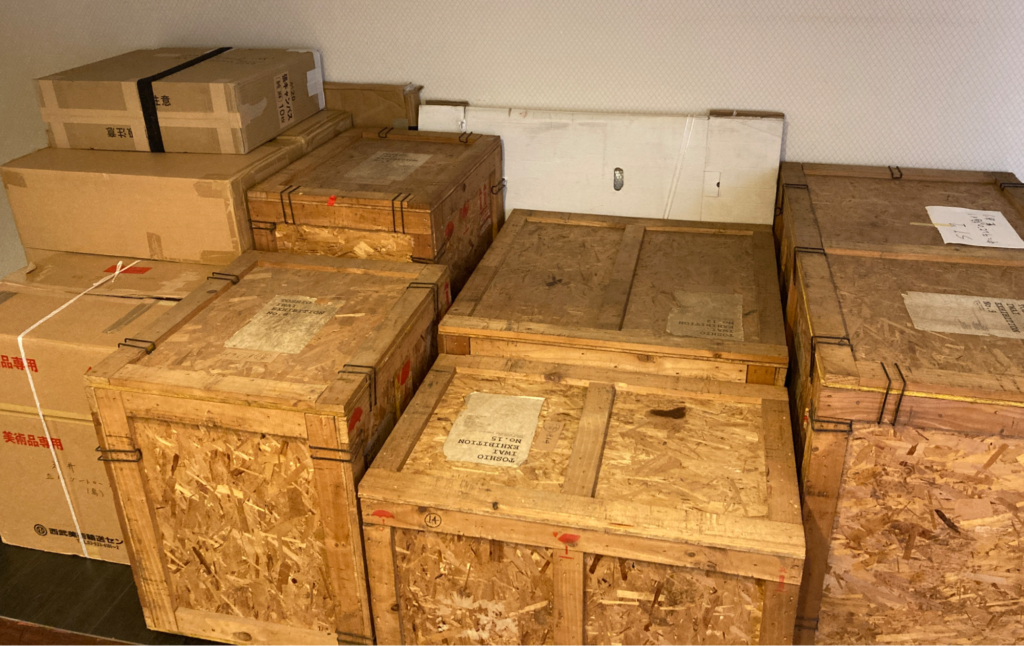
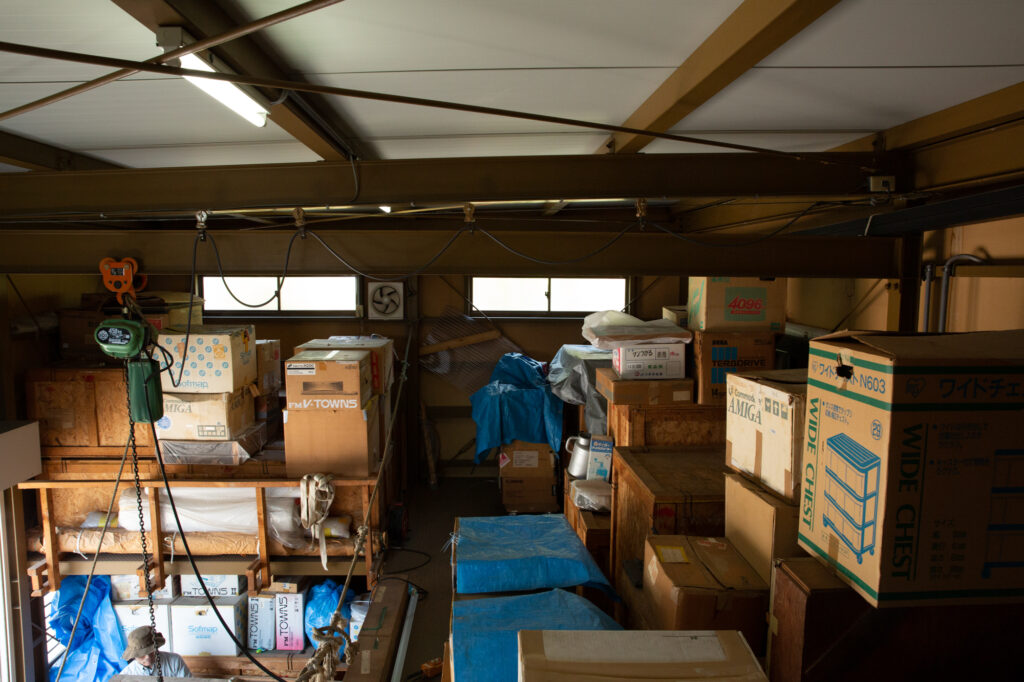
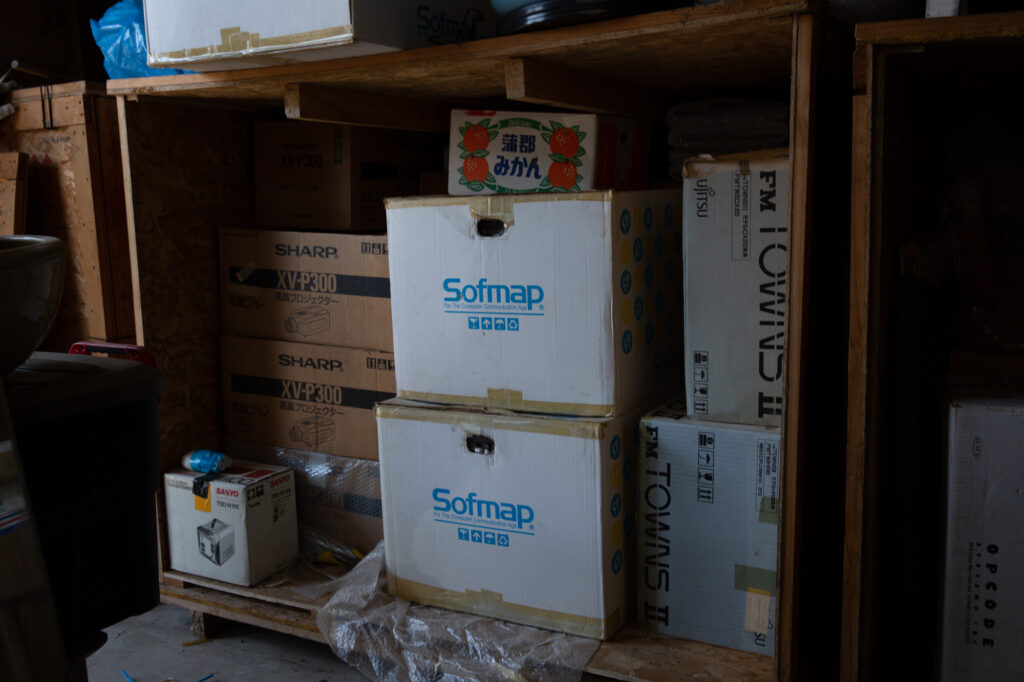
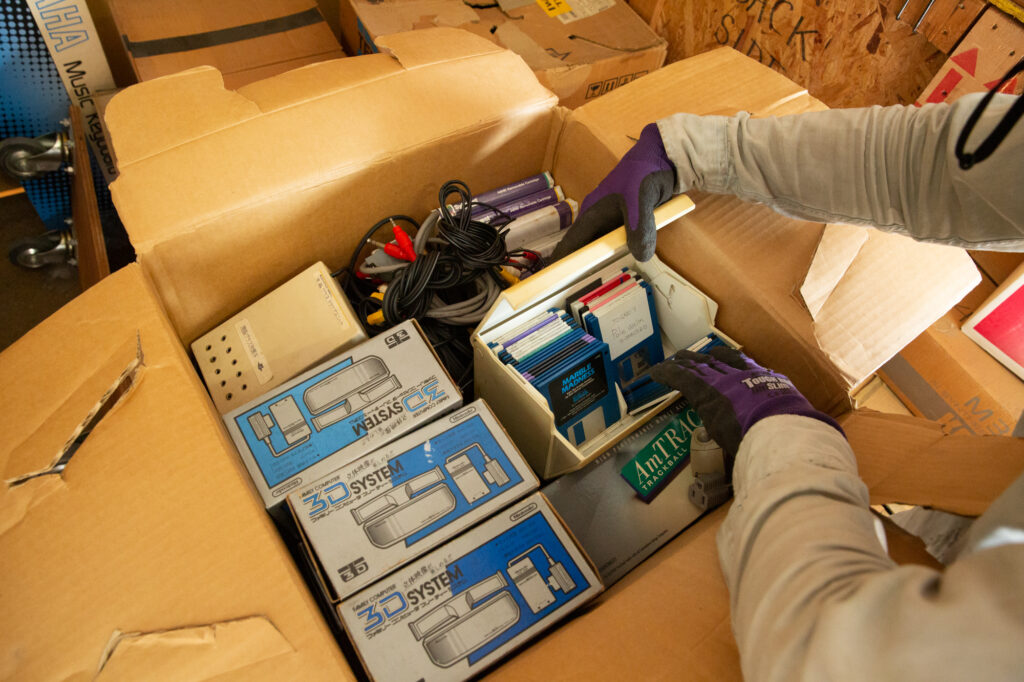
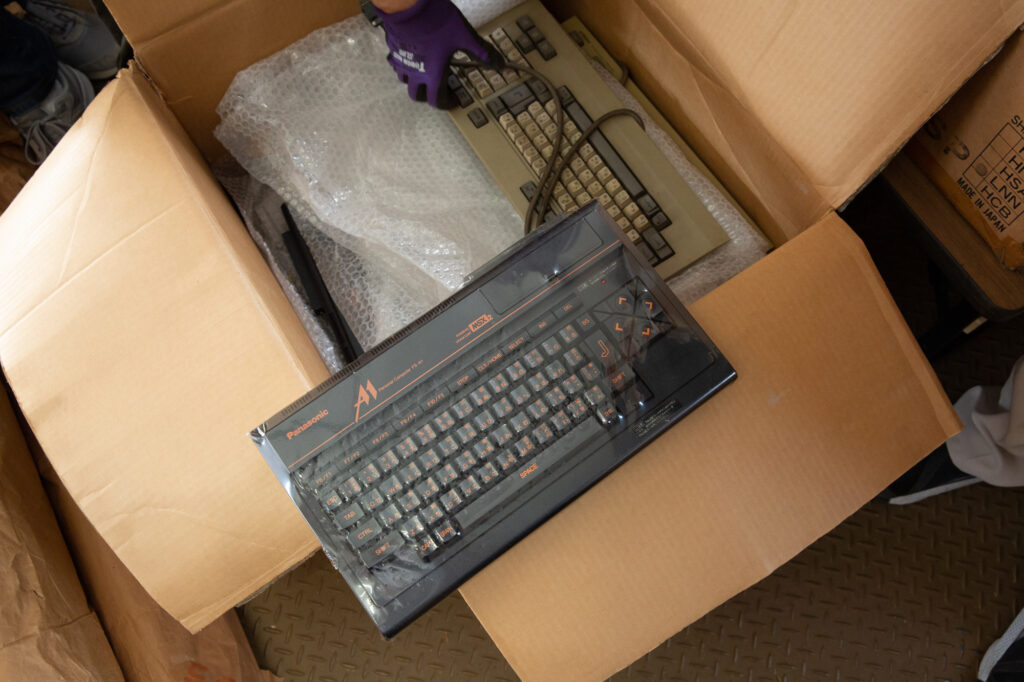
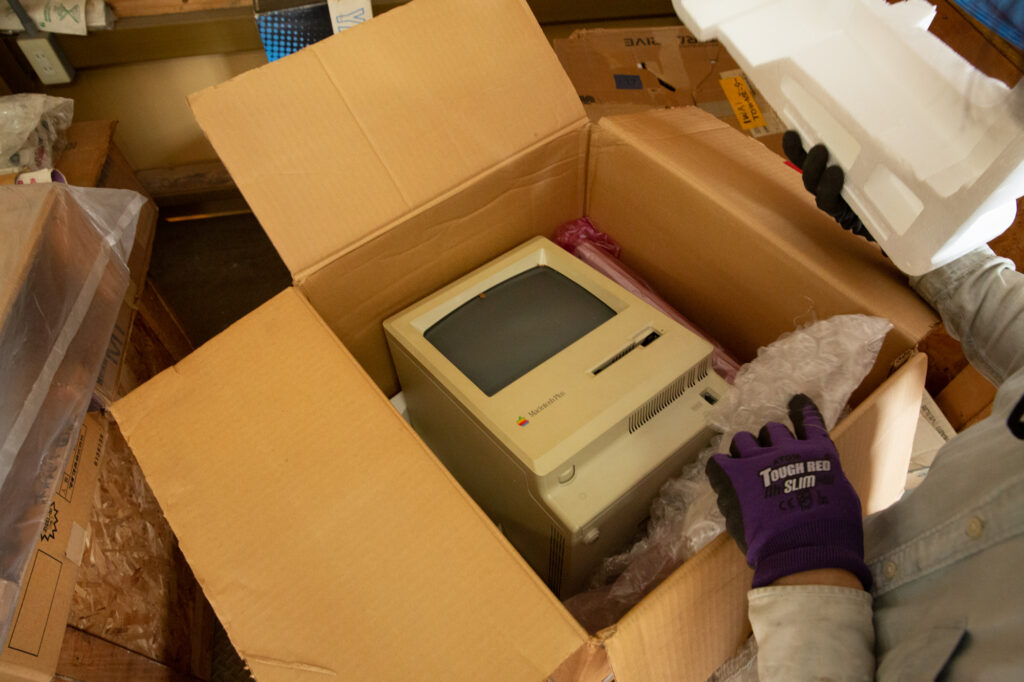
Many computer peripherals and monitors are stored in the warehouse.
1. Time Stratum Series
All of Iwai Toshio’s works from the Time Stratum series were originally presented between 1985 and 1990. The works added new technology to pre-film devices like the phenakistiscope (also known as the phenakistoscope) and zoetrope to transmute images.
1.1 Work Descriptions
Based on exhibition panels and catalogue for Which One’s Which? Iwai Toshio: A Retrospective—A House of 100 Stories and Media Art
Time Stratum I (1985)

Materials and Equipment:
Paper, wood, iron, motor, CRT monitor (Sony ProFeel 27 inch), speaker, videocassette player (VHS)
Summary:
This was the work Iwai made for his graduation project. Iwai filmed the movements of eyes and hands with a video camera and output the 180 frames of still images for each on a video printer, and then made reduction prints of these on Kent paper that he attached to two cylinders in a spiral formation. The cylinders are rotated by a motor and light from two monitors animates the hundreds of eyes and hands to make them appear as if they are moving while shifting sideways.
Time Stratum II (1985)

Materials and Equipment:
Paper, iron, motor, CRT monitor (Sony ProFeel Pro 21 inch), speaker (attached to Sony ProFeel), videocassette player (VHS or U-matic)
Summary:
Time Stratum II develops the flat visuals of its predecessor into three-dimensional moving images by placing puppets on a disk. The work is bathed in strobe lighting from a monitor installed above the work. As the disk rotates, the lighting creates the optical illusion that all the figures are alive and moving. Iwai wanted to make a moving image work that could be viewed from any angle.
Time Stratum III (1989)

Materials and Equipment:
Paper, aluminum, iron, acrylic, motor, CRT monitor (Sony ProFeel Pro 21 inch), speaker (attached to Sony ProFeel), computer (MSX2), MIDI sound module (Kawai K1r)
Summary:
Time Stratum III features three-dimensionally arrayed animal, plant, and mineral images that are animated inside three see-through acrylic domes. It uses four computers to synthesize the strobe lighting changes from three monitors with music.
Time Stratum IV (1990)

Materials and Equipment:
Paper, aluminum, iron, wood, polycarbonate, motor, CRT video projector, computer (MSX2)
Summary:
Inside the well-shaped work, a motor rotates three clear polycarbonate disks measuring 1.1 meters across and stacked on top of each other. Affixed to the disks are hundreds of geometrical shapes created with computer graphics. Light from the ceiling animates the shapes as the disks rotate, making it look like they are transmuting and moving. Because a video projector does not diffuse light, the work is able to modify the colors for individual parts and create a more dynamic sense of floating.
1.2 Video Playback Devices
The first two works in the series were made at the same time, as were the third and fourth. The playback device for the first two works was a videocassette player, and a computer for the latter works. Though videotape deteriorates if played on a loop, a computer can play back footage of a consistent quality. Time Stratum III used computers to synthesize video and music on three devices at once.
The display devices, on the other hand, were a cathode-ray tube (CRT) monitor for the first three works, and a CRT video projector for the fourth. While the functional differences in terms of light diffusion and control of the moving image are evident, the Time Stratum series is characterized by the quality of moving image achieved through CRT technology that current LCDs and LEDs cannot display.
1.3 Alternative Versions
Alternative versions of Time Stratum I and Time Stratum II were made for exhibiting at events so that many people could view the works in a short period of time. These event versions were exhibited in a format similar to a film screening. Another version of Time Stratum IV was also created for his later work Well of Lights (1992) and for exhibiting at the Japan Pavilion at the Seville Expo in 1992, with a different disk size and animation motifs.
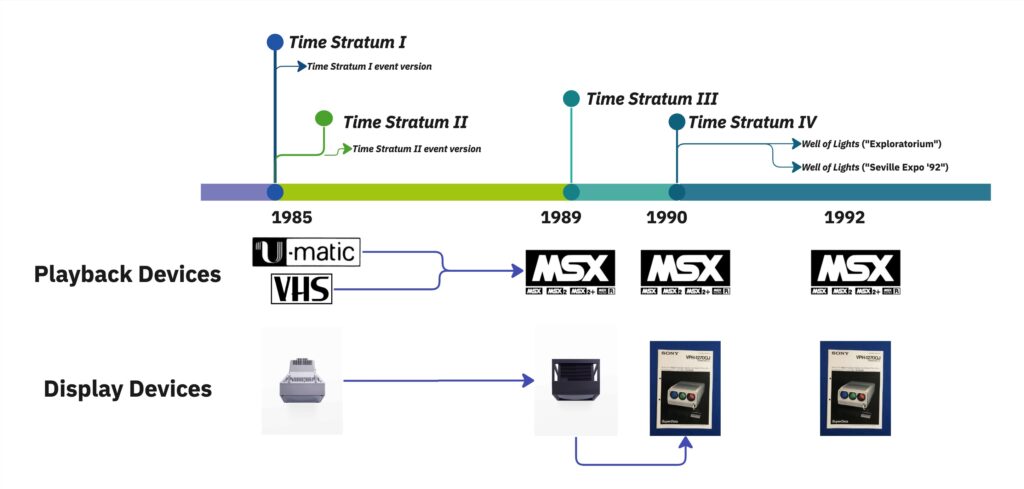
2. Restoration Approaches and Exhibited States
The first, third, and fourth iterations of Time Stratum were re-exhibited at CCBT, along with the disk from the event version of Time Stratum II as part of an archival exhibit. With the aim of displaying the three works in as close as possible to their original states, we adopted the following approaches to their restoration and exhibition.
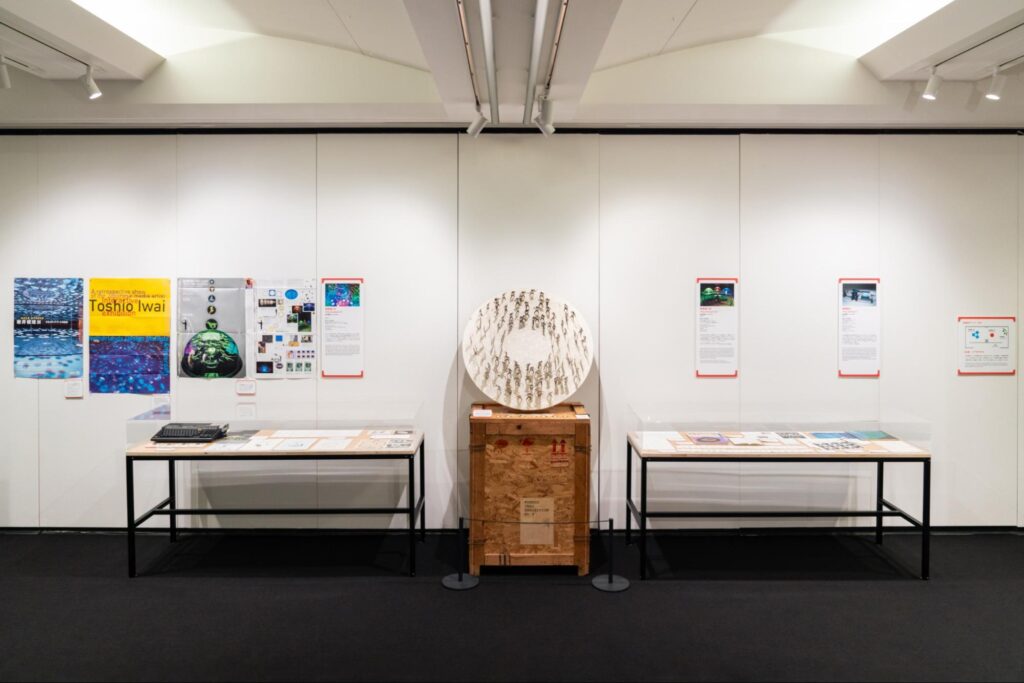


Time Stratum I
1. Restoration
– The original housing was used.
– We searched for new CRT monitors of the same model originally used. If the same model could not be found, using a different model but in the same size was the alternative solution (though smaller monitors were also possible).
– The work originally used a VHS tape. The footage was digitized for playing on media player software.
2. Exhibited State
We were able to obtain two small CRT monitors as substitutes. The digitally restored video footage was played on the monitors.

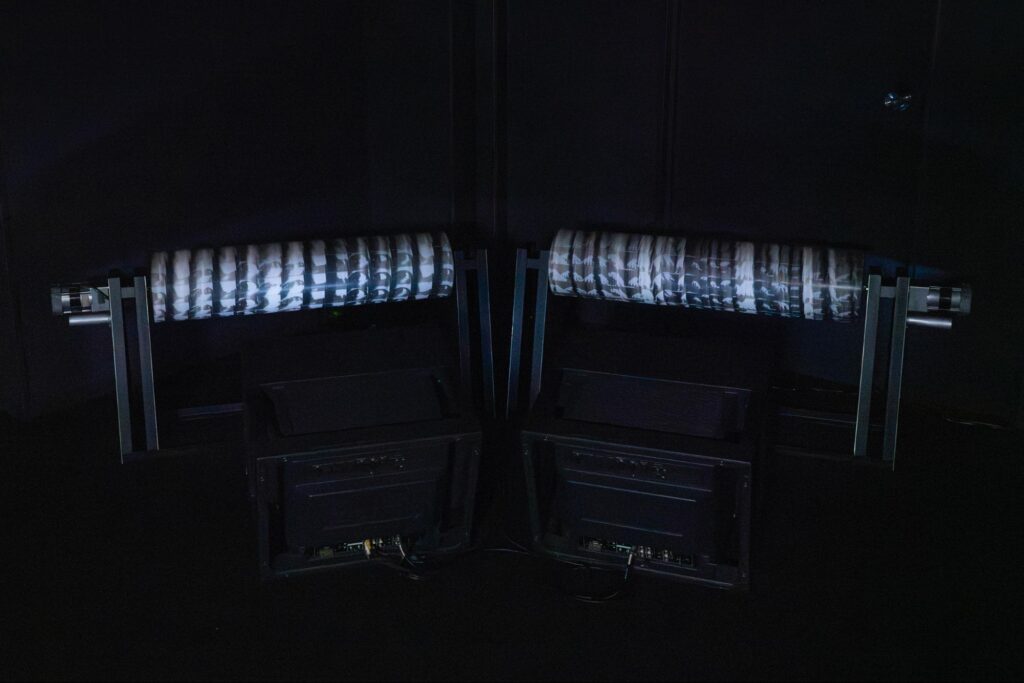
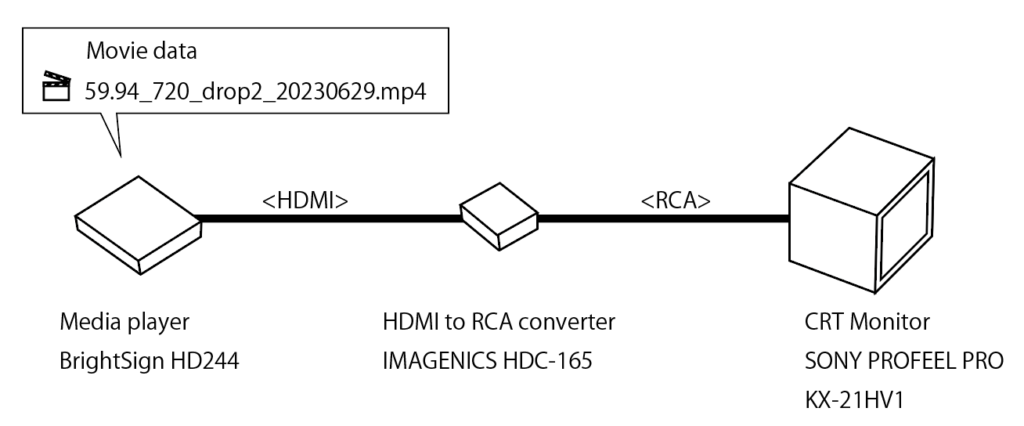
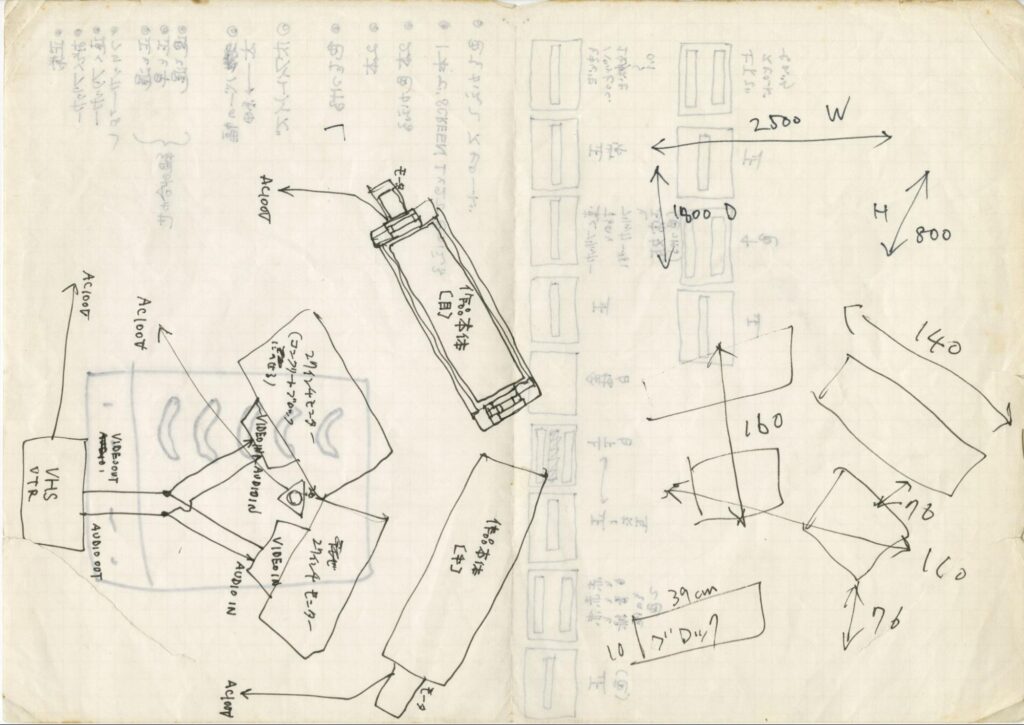
Time Stratum III
1. Restoration
– The original housing was used, though measures to prevent rust were necessary.
– We planned to use the original equipment and carry out repairs if necessary. If repairing it were not possible, a search would be undertaken for usable equipment of the same type. If the same type could not be found, using currently available equipment was an alternative approach.
2. Exhibited State
The work was exhibited in its original form.

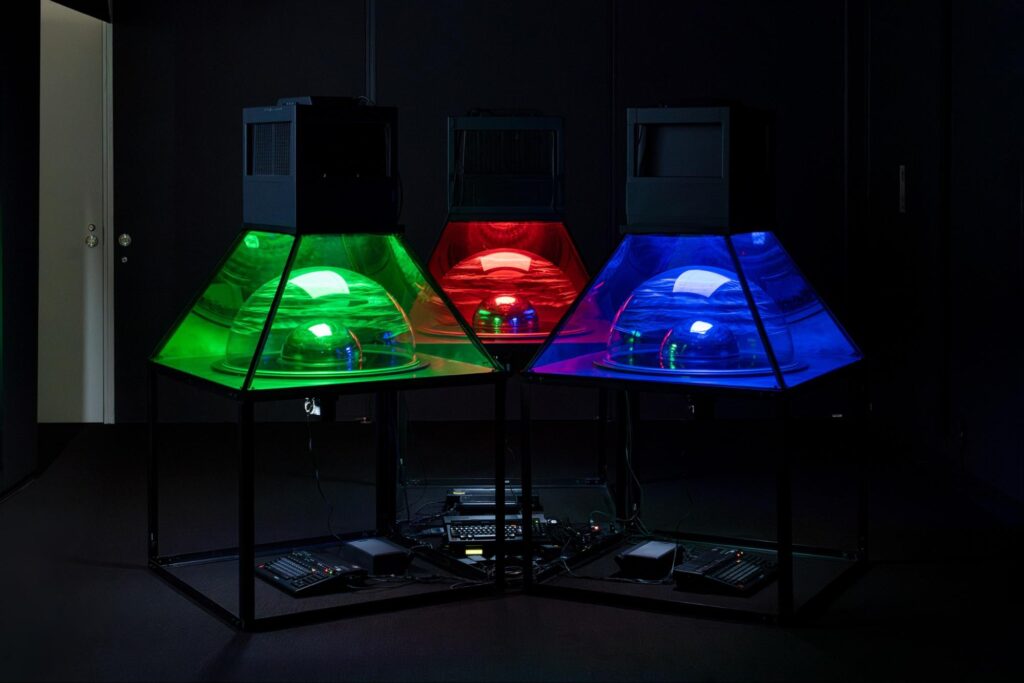
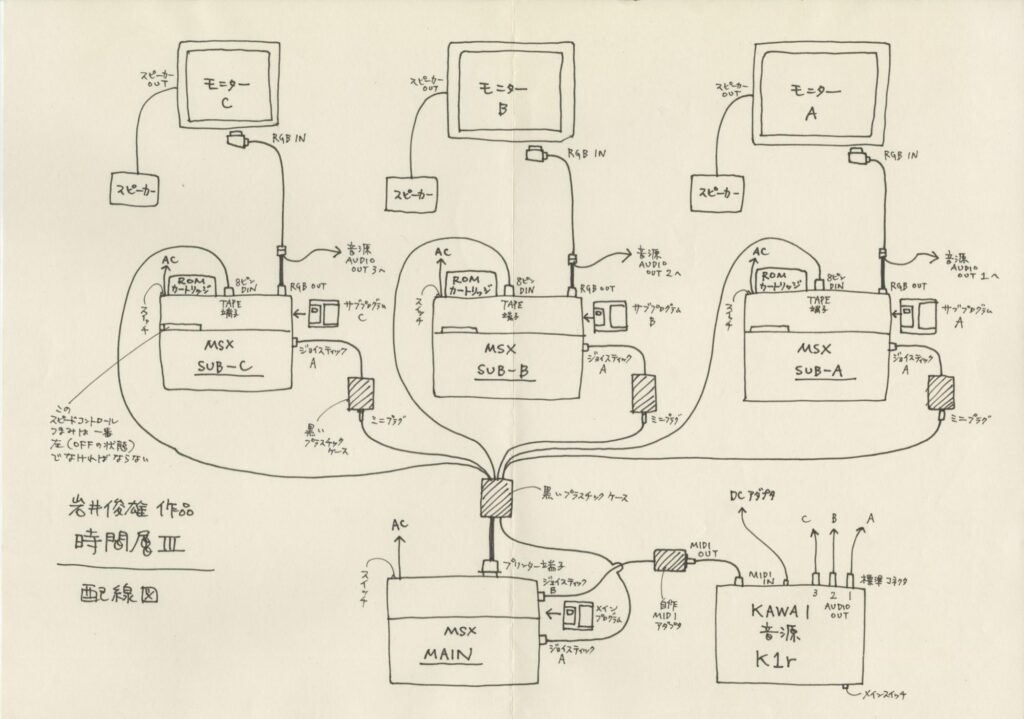
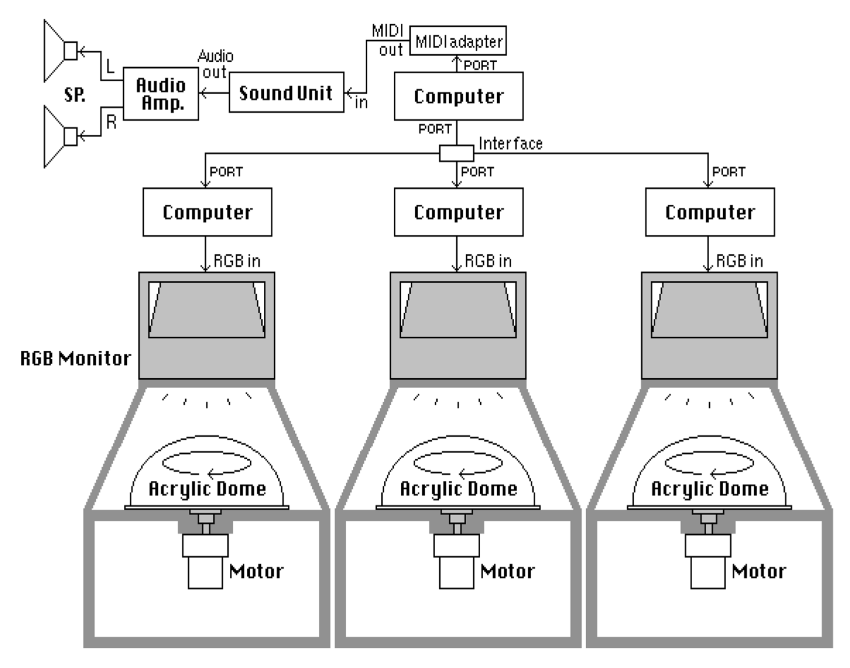
Time Stratum IV
1. Restoration
– The original housing was used.
– The original CRT video projector had not been preserved. The work could not be exhibited unless a projector of the same type was found.
– An MSX computer of the same model as originally used had been preserved and tests were carried out to see if it could be used and repaired. If repairing it were not possible, rewriting the source code was another option. If the cables were defective, a search could be undertaken replacements on the secondhand market.
2. Exhibited State
Because we were able to obtain a CRT video projector, the work could be exhibited in its original form.

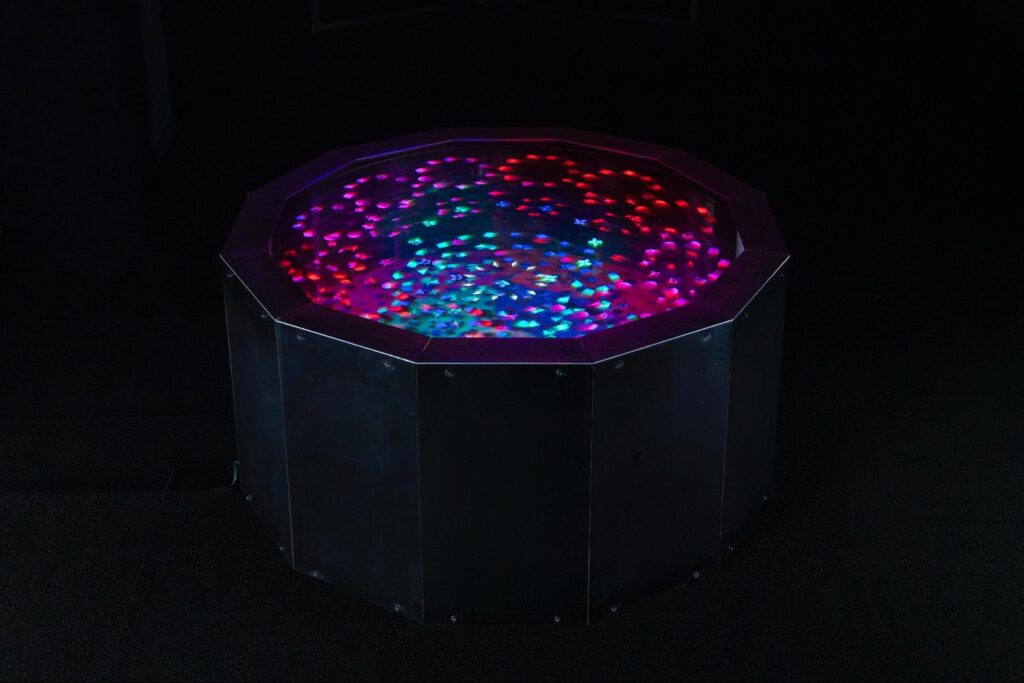
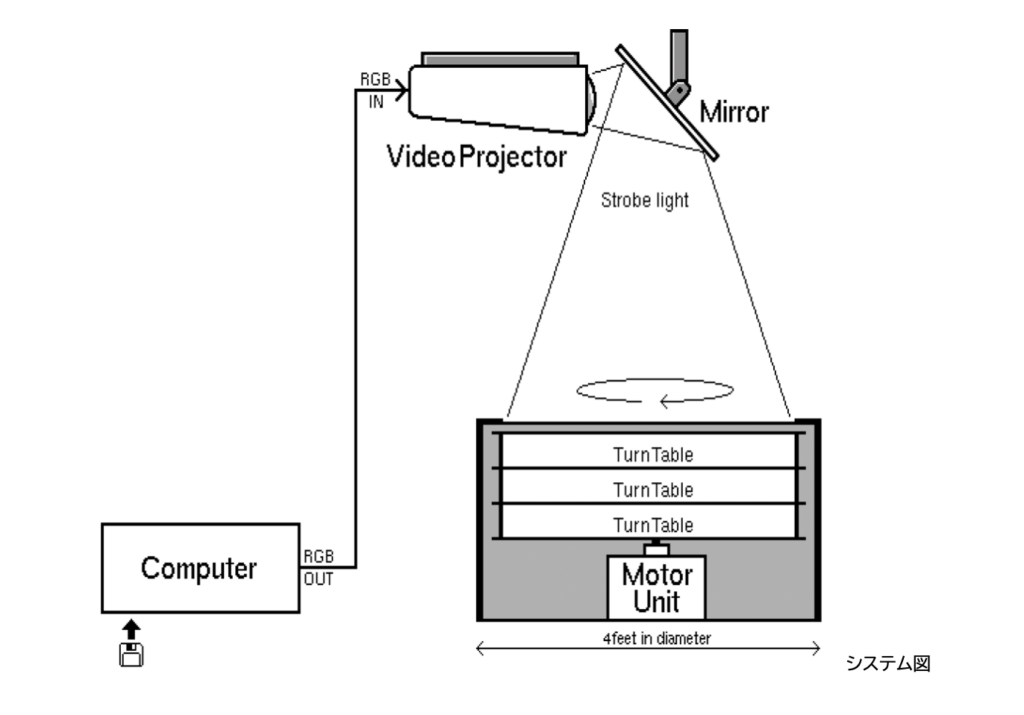
3. Restoration Process
Looking back chronologically on the process of re-exhibiting the Time Stratum series at CCBT, the restoration work can be divided into three phases.
Phase 1: Preparation
This phase involved the preliminary tasks before beginning the restoration, leading up to deciding the approaches we would take in restoring the works for re-exhibiting and reproducing them.
Phase 2: Restoration
This was the main production phase of the restoration, in which we carried out the restoration based on the guiding principles we had decided.
Phase 3: Future Preparation
This was the post-production phase in which we identified challenges that may arise in re-exhibiting and reproducing the works in the future.
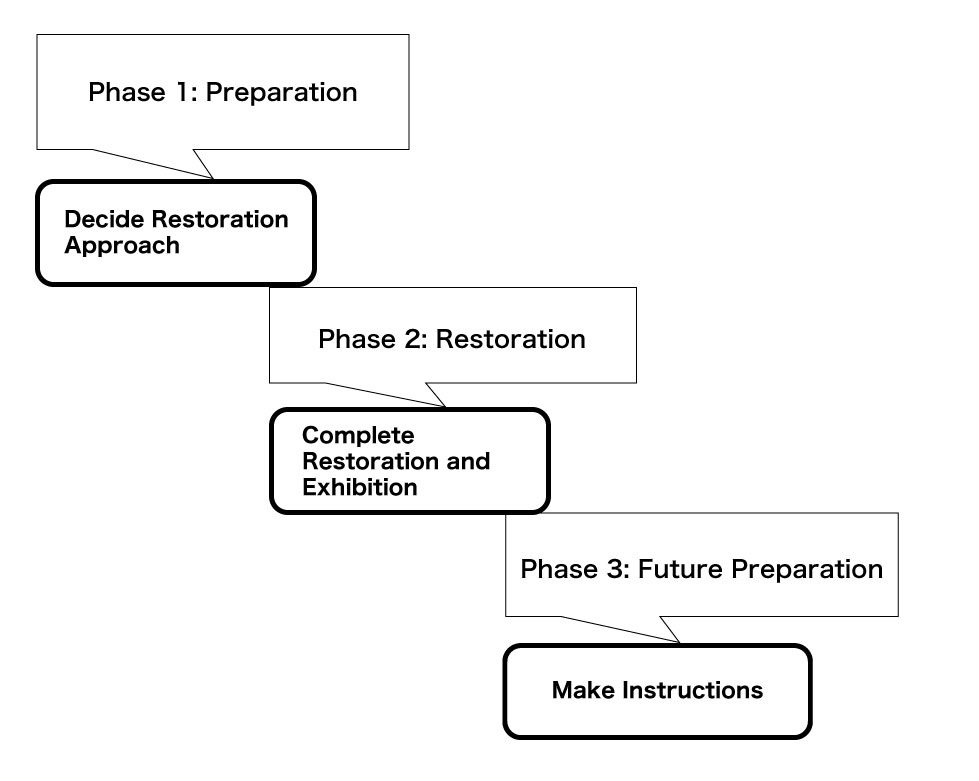
3.1 Phase 1: Preparation (2022–May 2023)
2022: MSX2 repaired by artist and others
Iwai carried out repairs on the MSX2 devices. With funding from the Agency for Cultural Affairs in fiscal 2022, Iwai’s video materials (including his moving image works) were digitized as part of the Iwai Toshio Archive and Research Project.
January 21, 2023: Meeting at CCBT
At the first face-to-face meeting at CCBT, Iwai shared his expectation to re-exhibit only the fourth work in the series. He thought it would be highly possible to re-exhibit the work if a CRT video projector could be obtained.
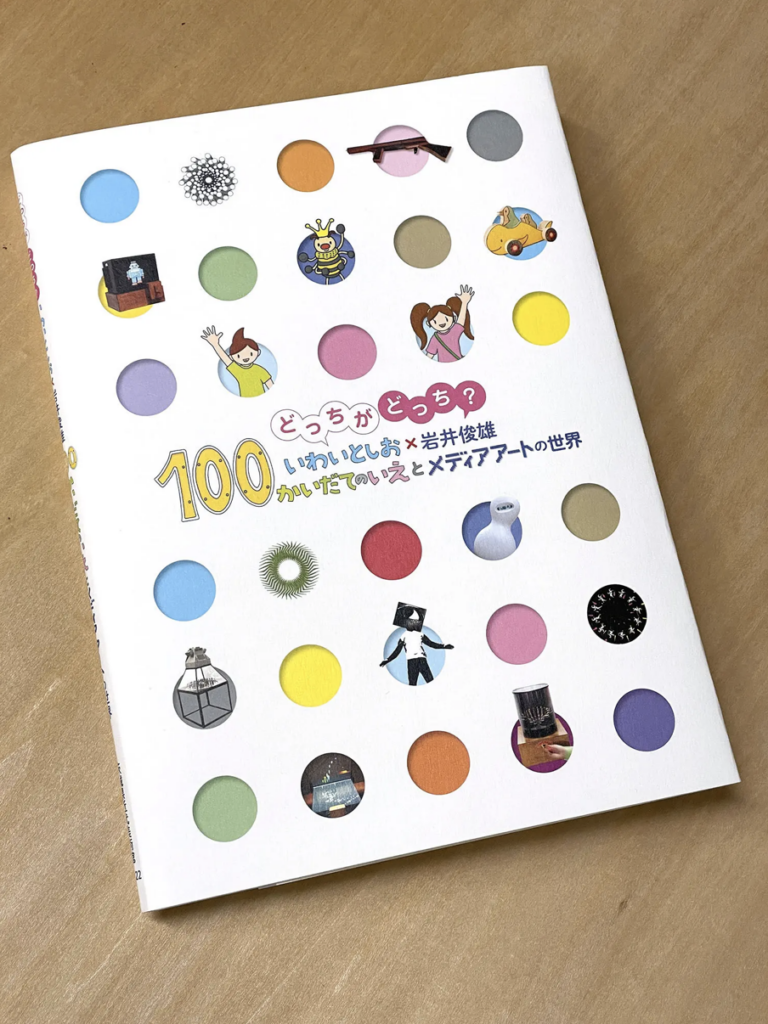
April 7, 2023: Proposal to exhibit three Time Stratum works
Iwai’s new proposal included exhibiting the first and third works in the series, in addition to the fourth. He also proposed considering the use of substitute equipment during the restoration process.
May 6, 2023: Specialist in CRT video projectors found
While researching the secondhand equipment needed to re-exhibit the series, we were able to find a specialist who deals with CRT video projectors, greatly increasing the likelihood of exhibiting Time Stratum IV.
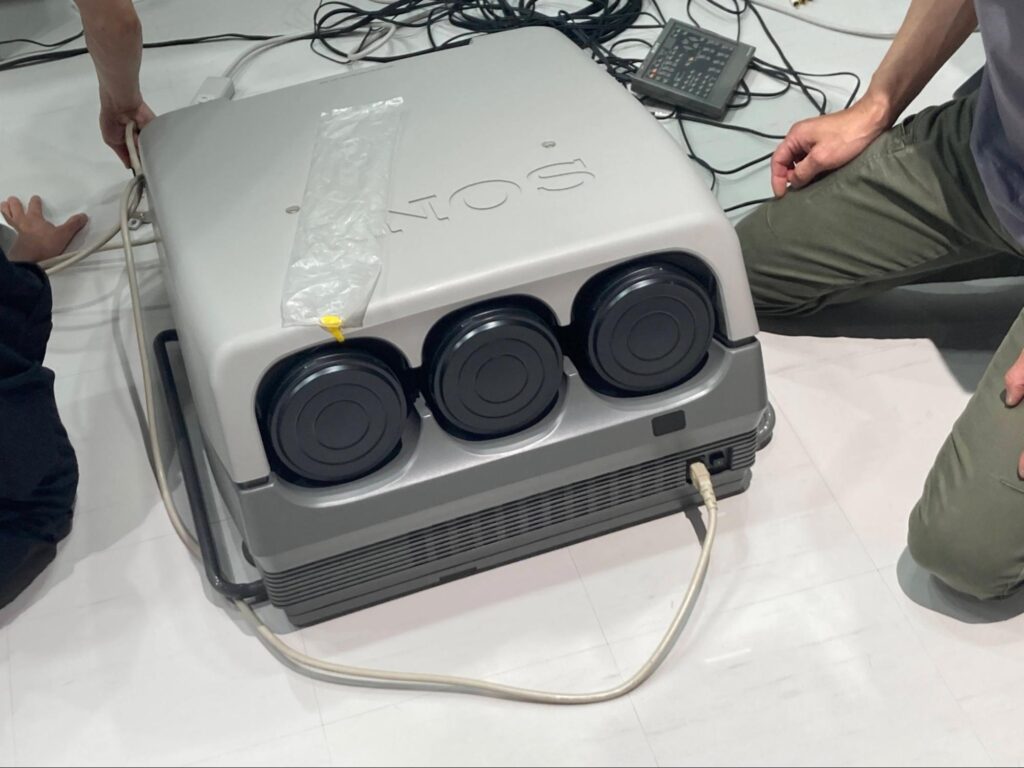
May 12, 2023: Removing works from Iwai Toshio’s personal warehouse
Iwai built a warehouse at his home to store the wooden boxes that returned from his solo exhibition held in 1994 at ZKM in Germany and then Finland and the Netherlands. People involved in the new exhibition, including the CCBT team, checked what was inside the warehouse, which they found to be well preserved.
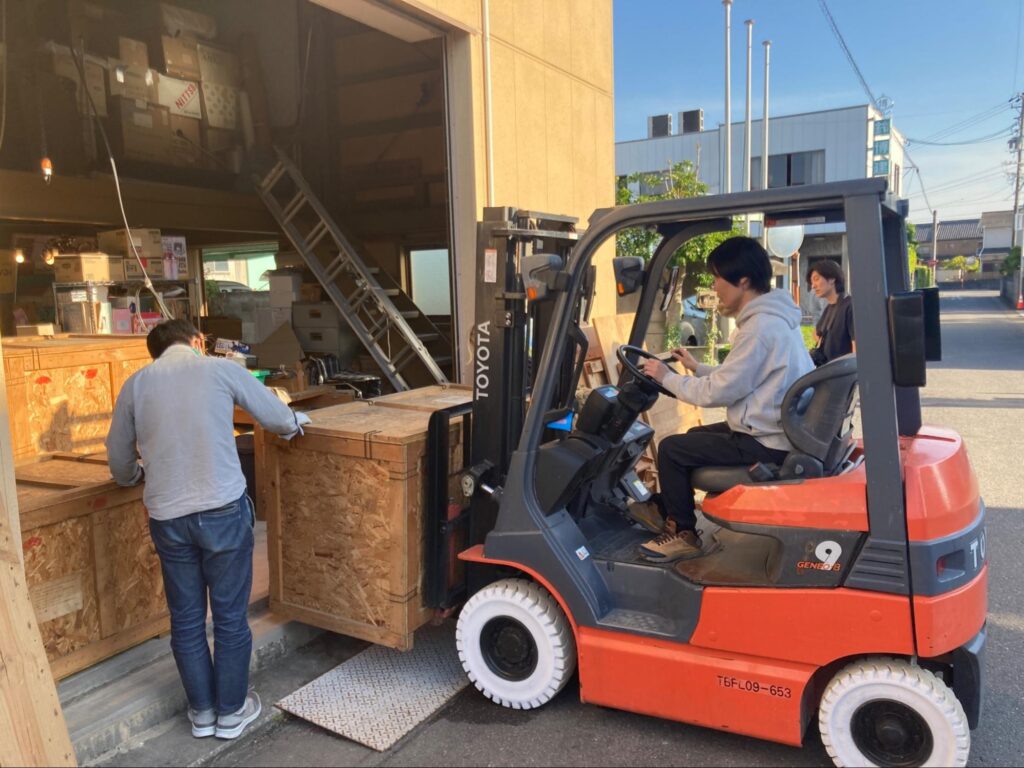
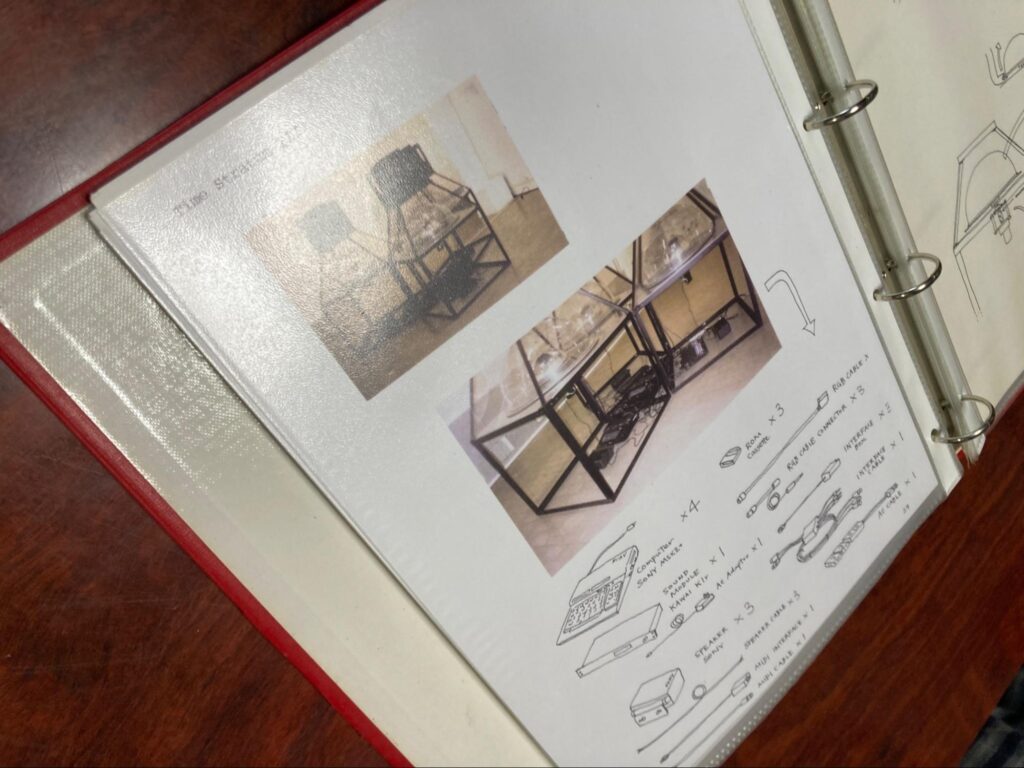
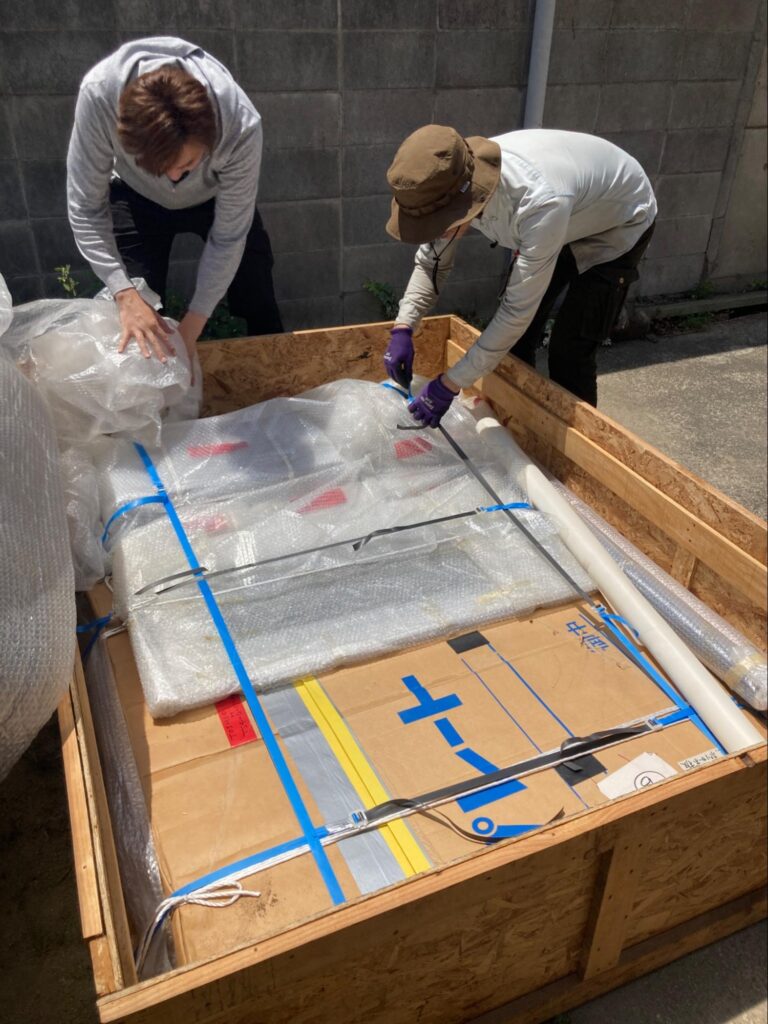
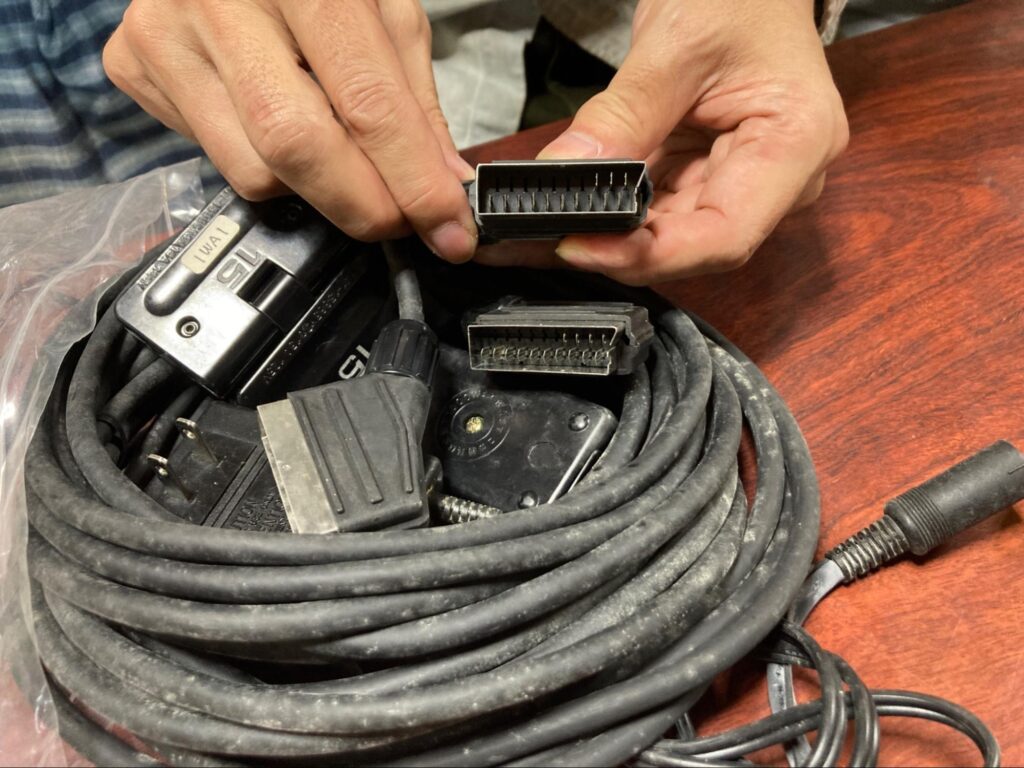
May 13, 2023: Works arrive at CCBT
After everything arrived CCBT, the contents were checked against the list of parts we had compiled. For parts that no longer functioned, we contacted professionals about the possibility of repairing them, and carried out full maintenance and replaced the floppy disk drives.
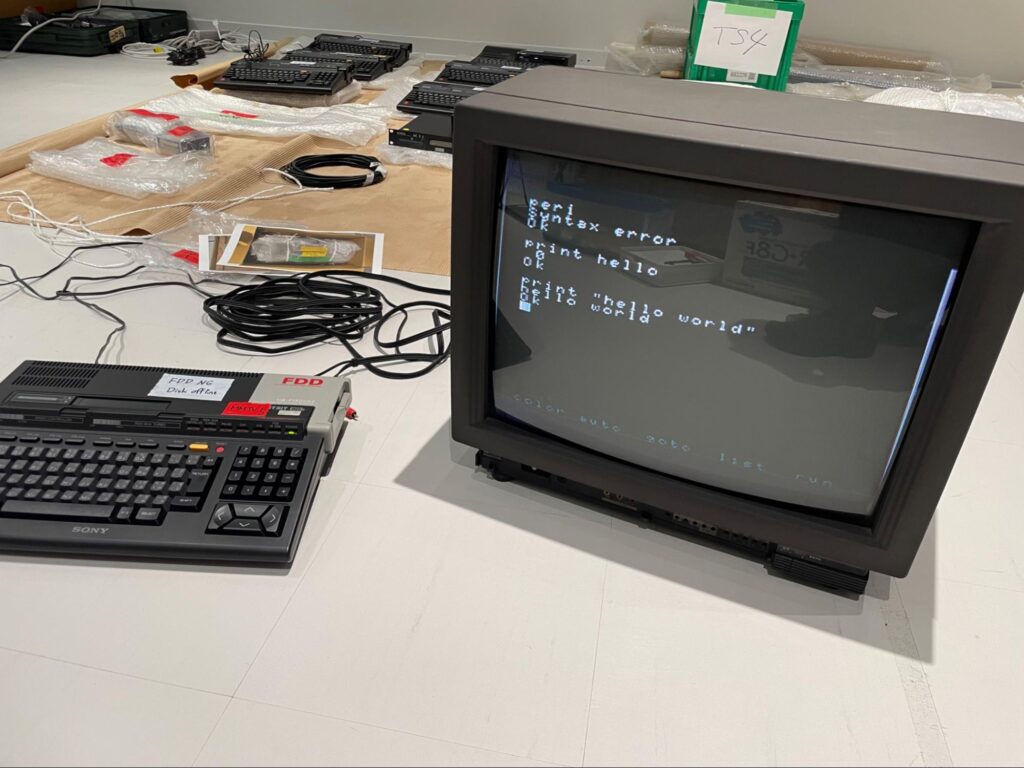
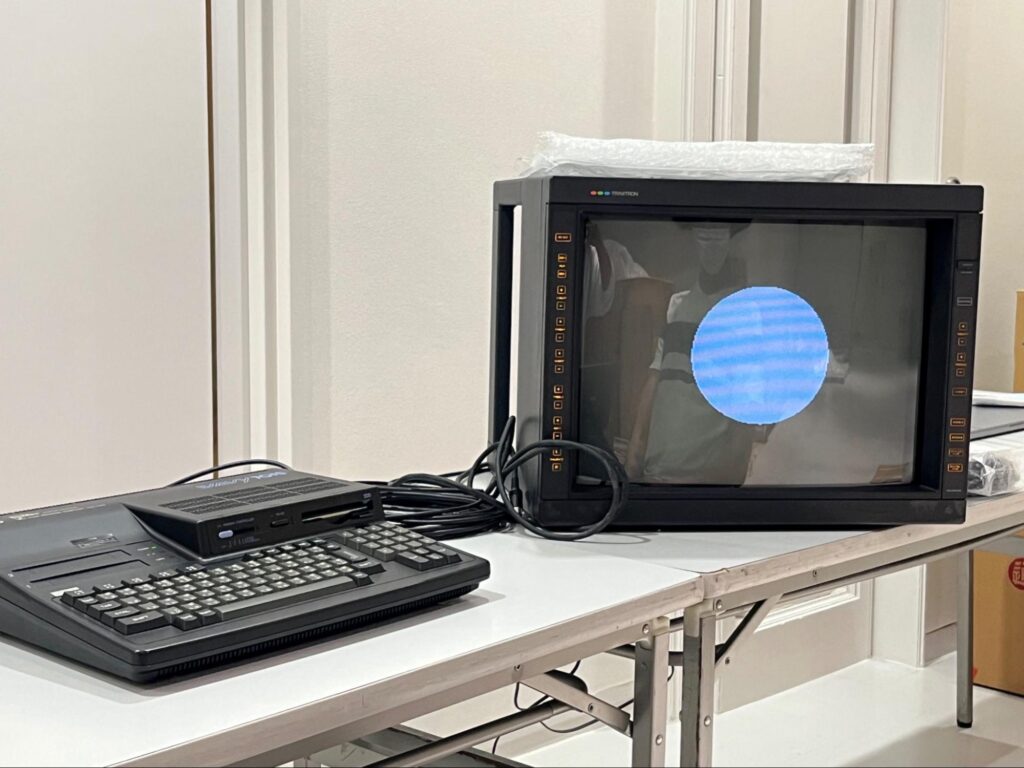
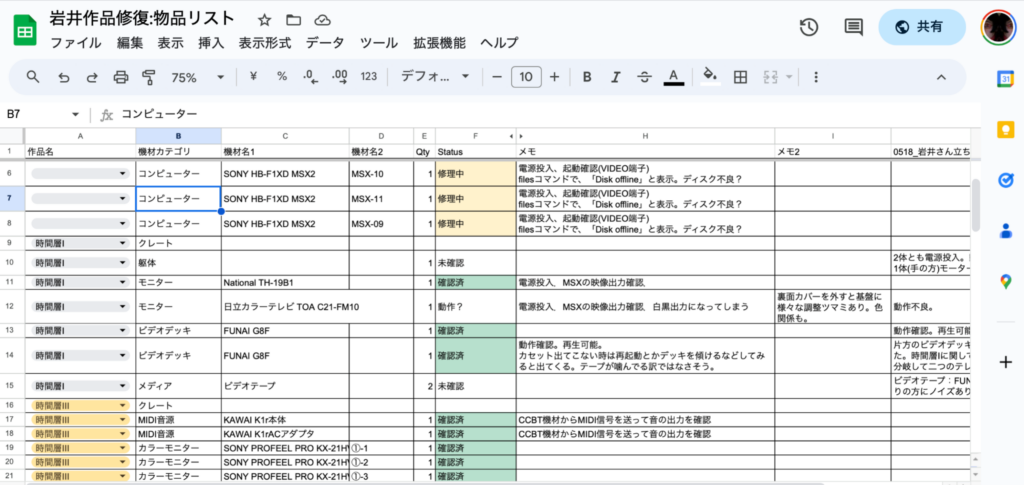
May 18, 2023: Unpacking and checking works at CCBT with Iwai Toshio
The artist and CCBT team checked the state of the works and equipment. Though the works showed signs of deterioration, they were usable in their present state. It was clear, however, that the devices for playing or displaying the video required migration (digitization from an analog format, capturing in a different format, etc.) or repair. At this stage, the final approaches to be taken for restoring and re-exhibiting the works were largely decided.

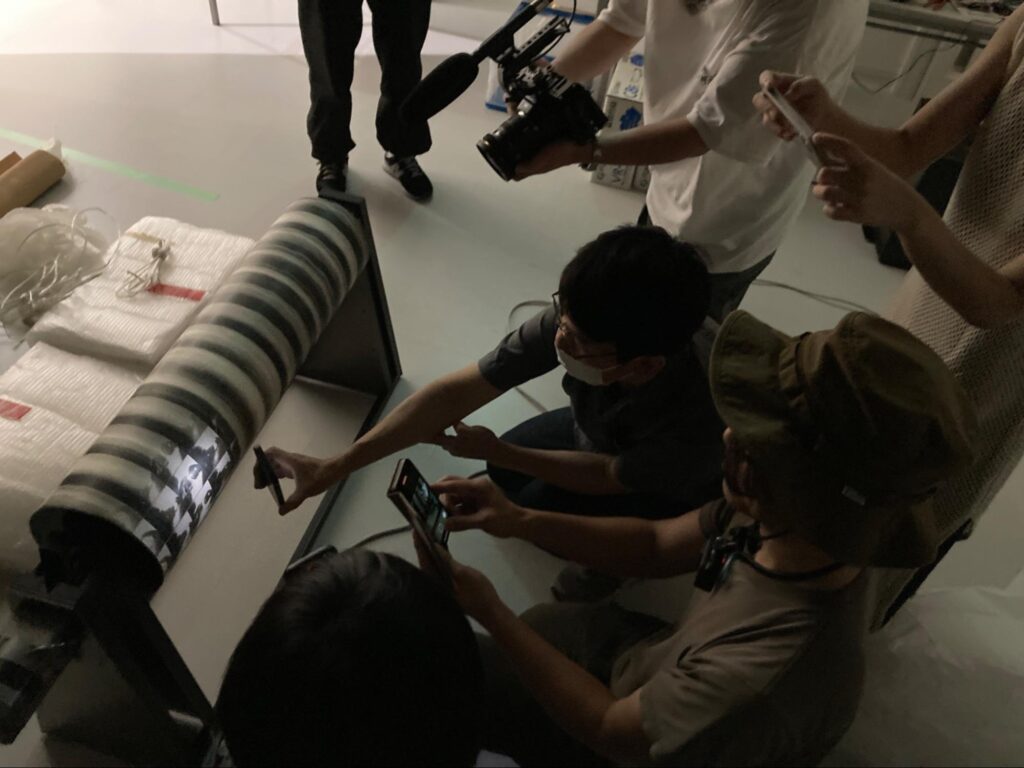
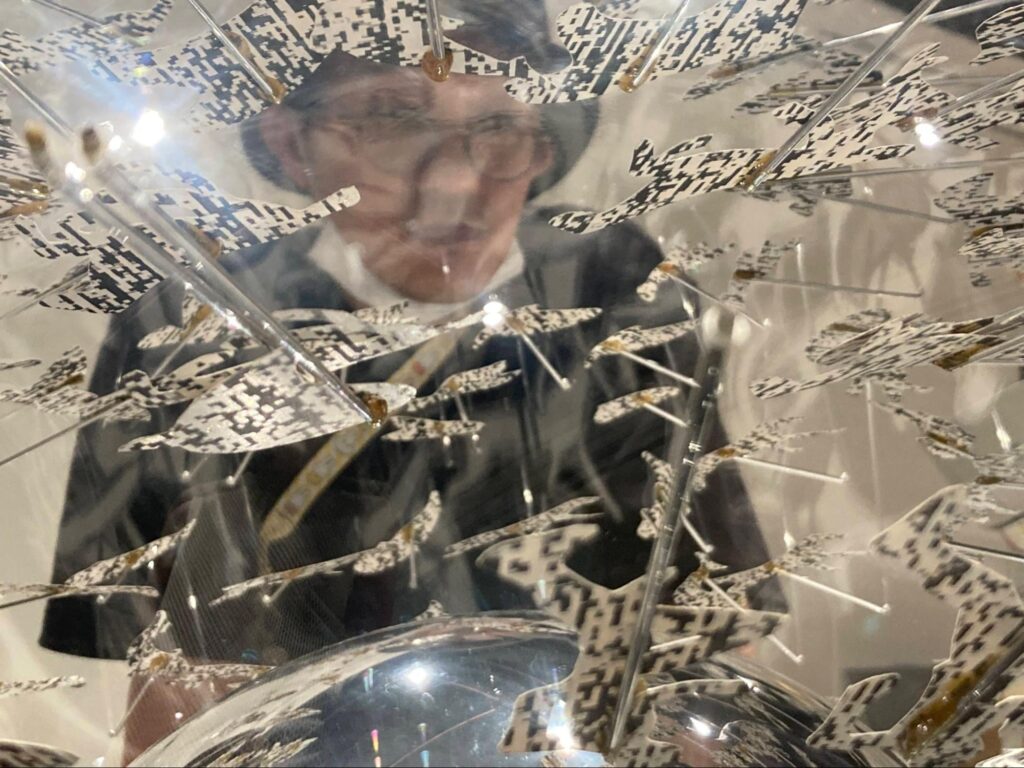
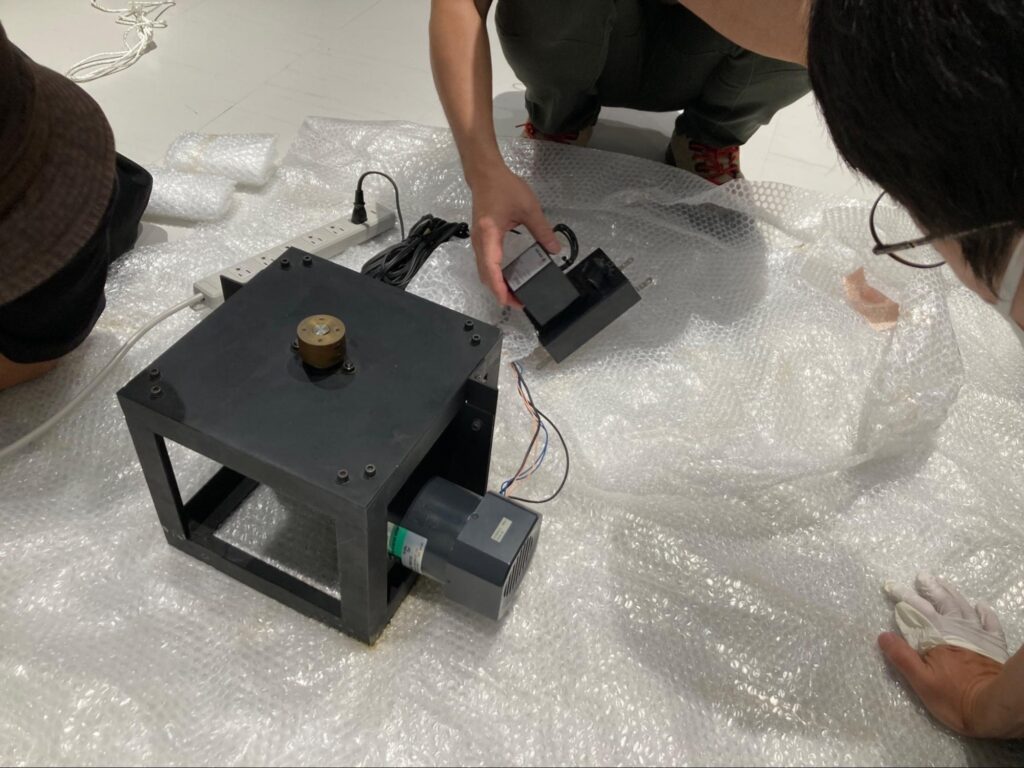
3.2 Phase 2: Restoration (May 19–July 7, 2023)
Analog Videotape Migration
Migrating an analog videotape necessitates confirmation of the original video frame rate. The playback device (media player software, DVD player, etc.) and display device (monitor, project) must be compatible, making it necessary to perform tests when deciding which device to use.
Finding and Installing a CRT Video Projector
Being able to consult a professional with knowledge of CRTs was a major factor when it came to the video projector used for Time Stratum IV.
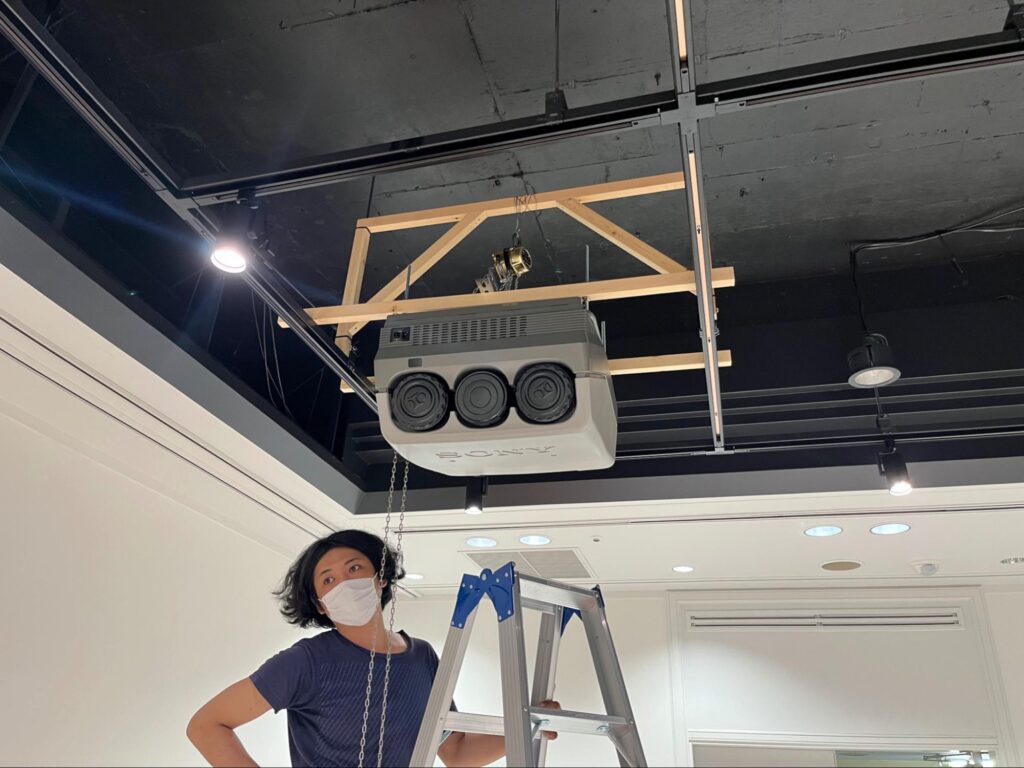
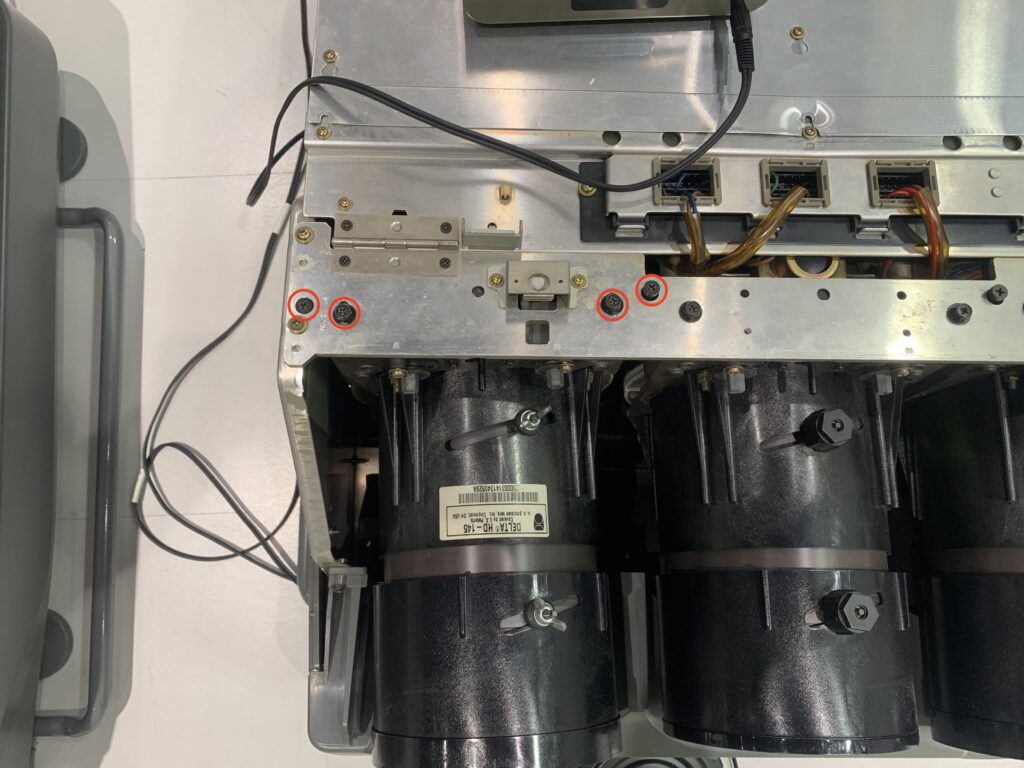
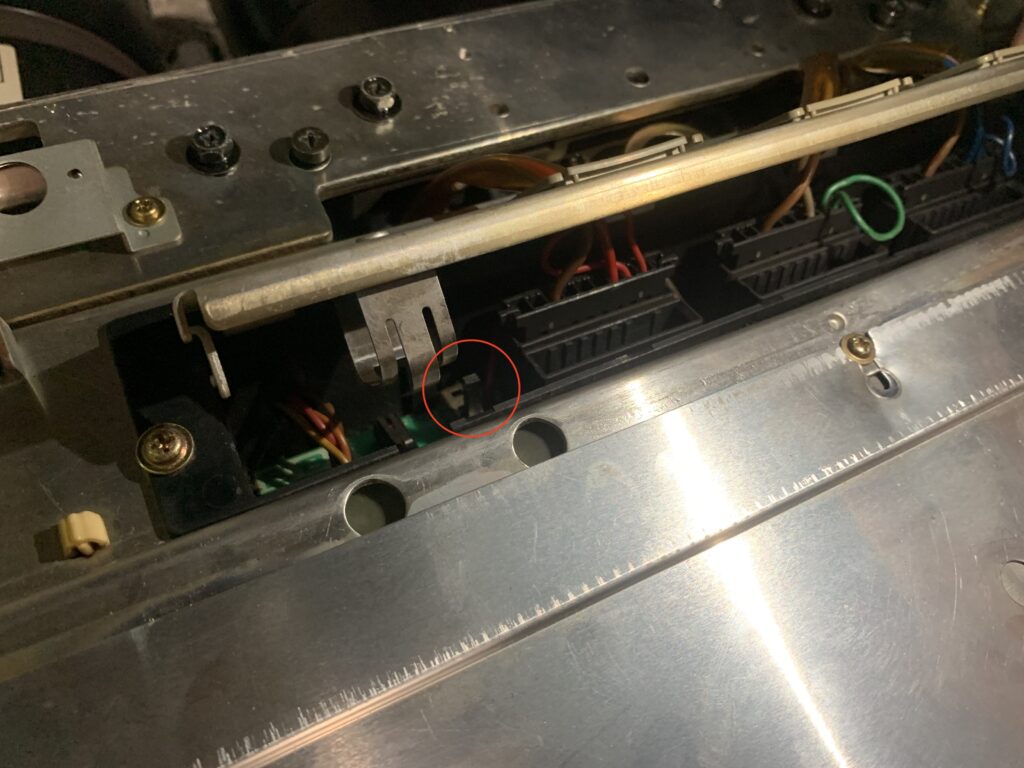
A CRT video projector has a special way of making adjustments not found in current projectors. In addition to using a remote control, there is a switch for flipping the video upside down as well as screws for adjusting the angle of the lens. If time and budget allows, it is ideal to adjust and install this kind of projector after receiving instruction from an expert.
MSX2 and MSX2+ Repairs
We also found someone capable of repairing the MSX2 and MSX2+ computers used for Time Stratum III and Time Stratum IV, allowing us to re-exhibit the works using the original equipment. The following points refer to specific issues related to repairing the Sony MSX computers and re-exhibiting the works.
1) Defective Floppy Disk Drive Belt
One of the main causes for MSX computers breaking down is a defective floppy disk drive. As the Sony model was made with a rubber belt, we replaced it with a beltless drive.
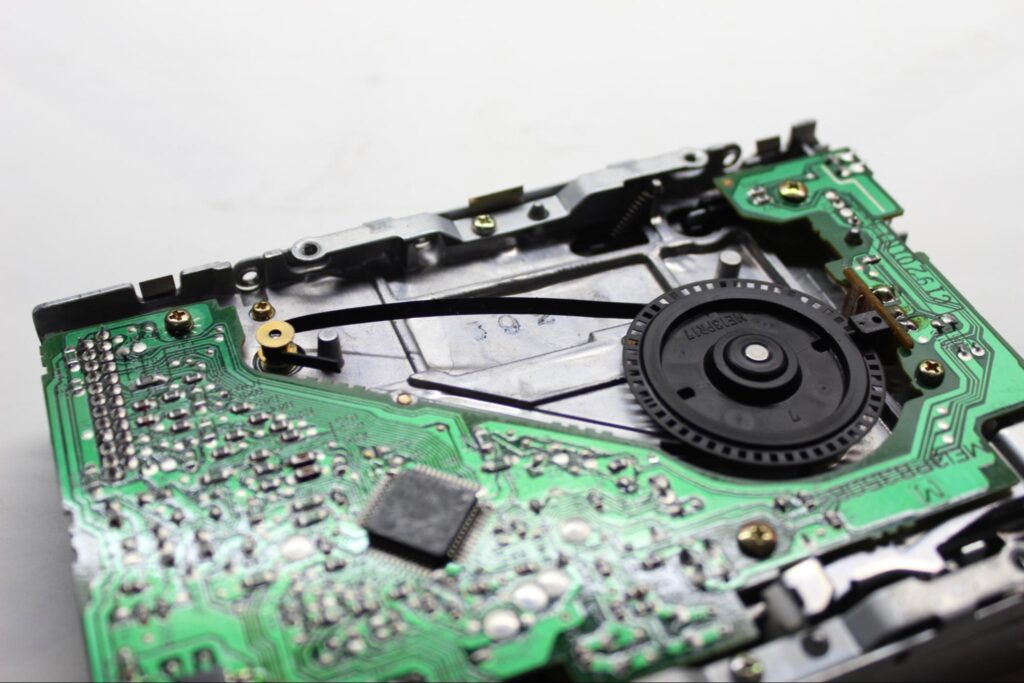

2) Defective Video Circuit Board
The video circuit boards used in both the Sony MSX2 and MSX2+ were defective due to deterioration of the electrolytic capacitors, resulting in erratic video RGB output.
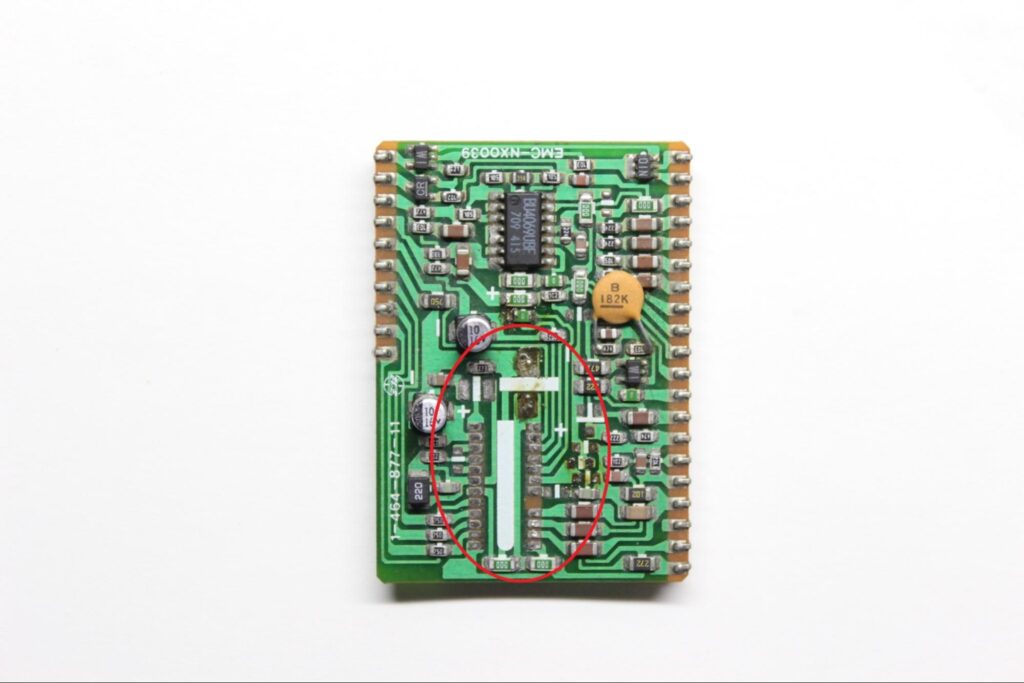
3) Cartridge
The MSX has a slot interface. As a cartridge must sometimes be inserted for the device to work, it is necessary to confirm you have the right cartridges.
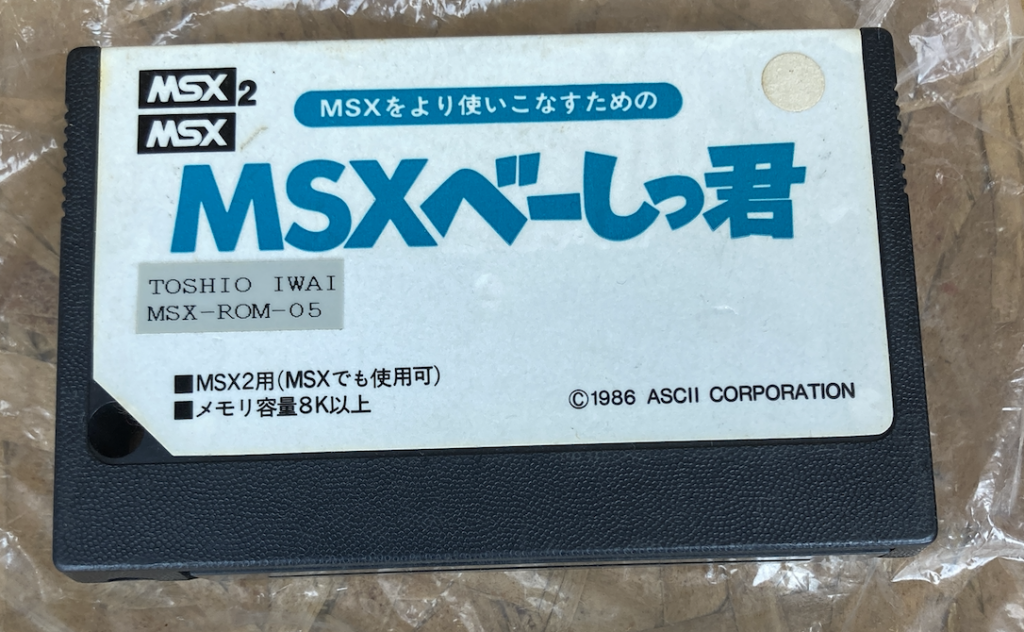
4) Programs Dependent on MSX Models
A ROM compiler is needed to use the compiling functions in the Sony MSX, but not for the Sanyo MSX because it has a built-in compiler.
Depending on the model of the built-in compiler, though, the code may need to be changed for it to function correctly. Time Stratum III and Time Stratum IV both require either a ROM compiler or built-in compiler to be exhibited.
5) Floppy Disk Backups
Copies have to be made of the floppy disks in advance. In addition to duplicating the disks, we saved the data and code on memory sticks. We also printed out the source code.
6) Manuals and Information on Technical Specs for MSX and Peripherals
Since using an MSX device differs from current computers, preparing manuals is a must. It is also recommended to collect manuals and such for peripherals.
Phase 3: Future Preparation (July 8–August 21, 2023)
After the start of the exhibition, the CCBT technical team carried out various tests of approaches to restoring the Time Stratum series in the future.
1) Strobe Video Capture
We carried out tests to see if media player software could be substituted for the strobe video playback device. Ultimately, the video was preserved in as high a resolution quality as possible to function as a resource for archiving the work and future exhibiting.
2) Backing Up and Extracting Floppy Disk Data
Though it is possible to make a copy on a current computer if you have a floppy disk drive compatible with the operating system, we copied the data on the MSX device using an MSX-DOS disk.
3) Experiments with Alternatives to a CRT Video Projector
We tested using a current projector. We played the Time Stratum I video data and output it through a projector via a HDMI port, and tried projecting it onto the housing. Though the stroboscopic effect initially appeared to work, the test was not fully successful, which we put down to the projector’s imperfect output of the necessary flicker.
4) Time Stratum III Audio Recording and Restoration
We used an audio device to record the three types of signals output from the three audio output channels of the MIDI sound module, and then saved them as separate files. Some minute noises were audible several times in all of the recorded data, but restoring the data was possible by utilizing the multiple recordings and substituting those instances with audio data from the same point on an alternative recording.
5) Capturing the Time Stratum III MIDI Signals
The MSX’s MIDI signal output was exported as a MIDI file. This required attention to the differences between the MIDI standard set in 1991 and the General MIDI standard from 1991.
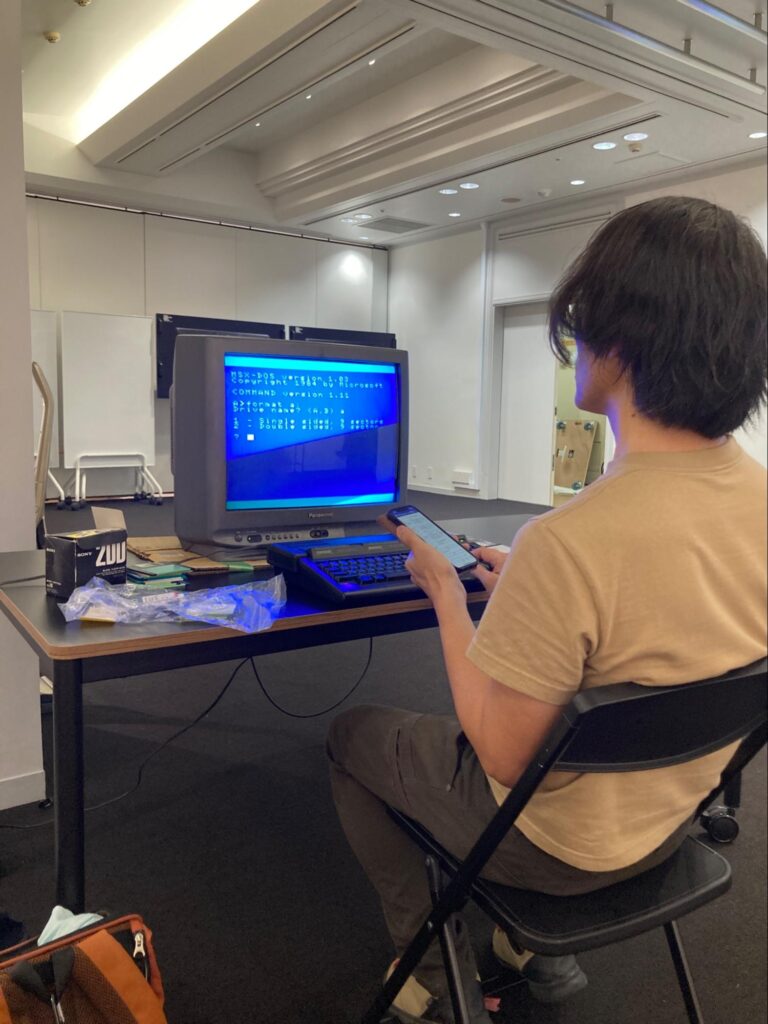
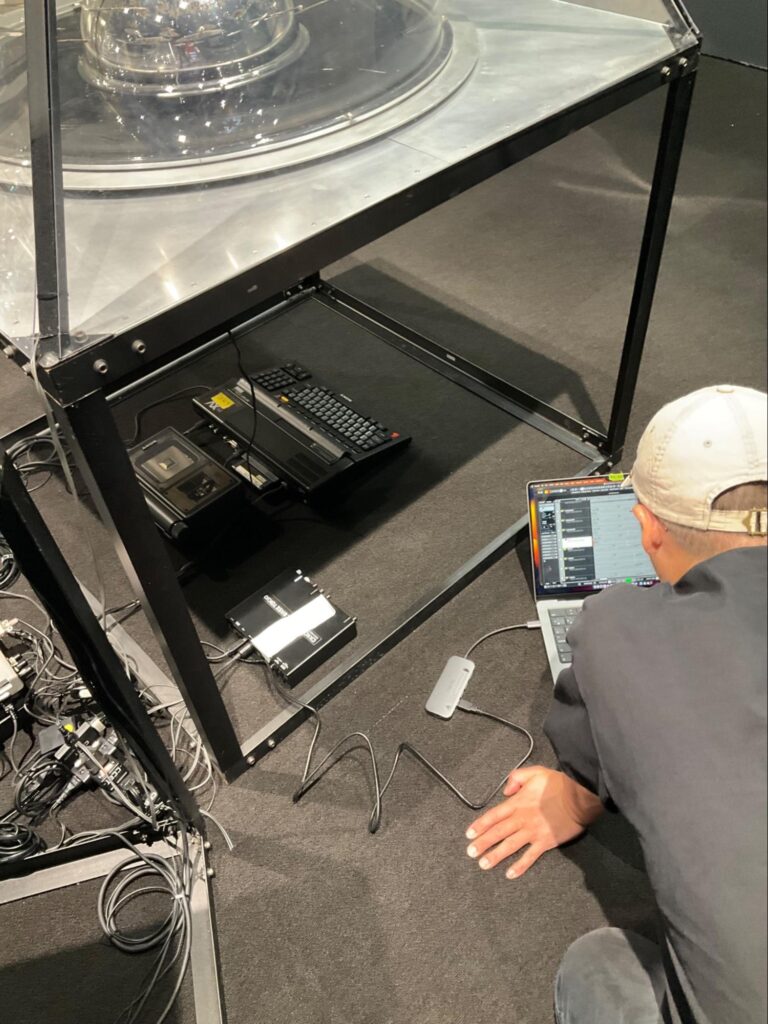
4. Challenges
Consideration of Contexts
The restoration process for the Time Stratum series outlined in this report presumes that the works will be restored and recreated for further exhibiting in the future. Because he has other works related to the series, ascertaining a comprehensive restoration approach that could include such other works was the preferred outcome for Iwai.

Courage to Let Go
It is now apparent that there are professionals capable of repairing the equipment used in the Time Stratum series. Almost-forgotten audio media like cassette tapes and vinyl records are also experiencing a revival of late. Considering their material and archival value as well as storing original equipment and materials improve the possibility to repair and restore media art works in the future.
Technical Support Discontinued
The Sony monitor that is one of the key pieces of original equipment for the Time Stratum series is no longer supposed to be used at the request of the manufacturer due to the risk of accident it poses. An American manufacturer is making and selling new monitors, which could be used for future exhibitions instead of the Sony device.
5. Conclusion: Playing the Time Stratum Series Back (wards)
Case Study in Restoring a Work from a Private Collection with the Artist
The works from the Time Stratum series exhibited at CCBT are part of the artist’s private collection, and the team worked directly with Iwai to consider the approaches taken in the restoration process. In the case of a work from an art museum collection, the museum’s intentions take precedence, and things may not go how the artist wishes. In cases where the artist is absent from the process, the restoration of the work may run into problems unless appropriate instructions and guiding principles are in place. The restoration process this time unfolded somewhat like a vicarious experience of creating the works. To restore a work, you need to ascertain what turning back time to lay the groundwork in the present as well as making decisions really entails.
Toward a Reassessment and Secure Legacy of the Work
Printing out the source code and exporting the MIDI signal data during the two and third phases of the restoration enabled the people who knew the works’ original production processes to rediscover that past. A further significant achievement was carrying out optimum repairs and backups now in order to safeguard the continued development of the work.
The Era of Made in Japan
Of the devices we repaired to exhibit the Time Stratum series, Japanese manufacturers played important roles in developing the standards for videotapes, MIDI, and MSX. We now need to reassess the media art created during this period within the social and technological contexts of Japan at that time.
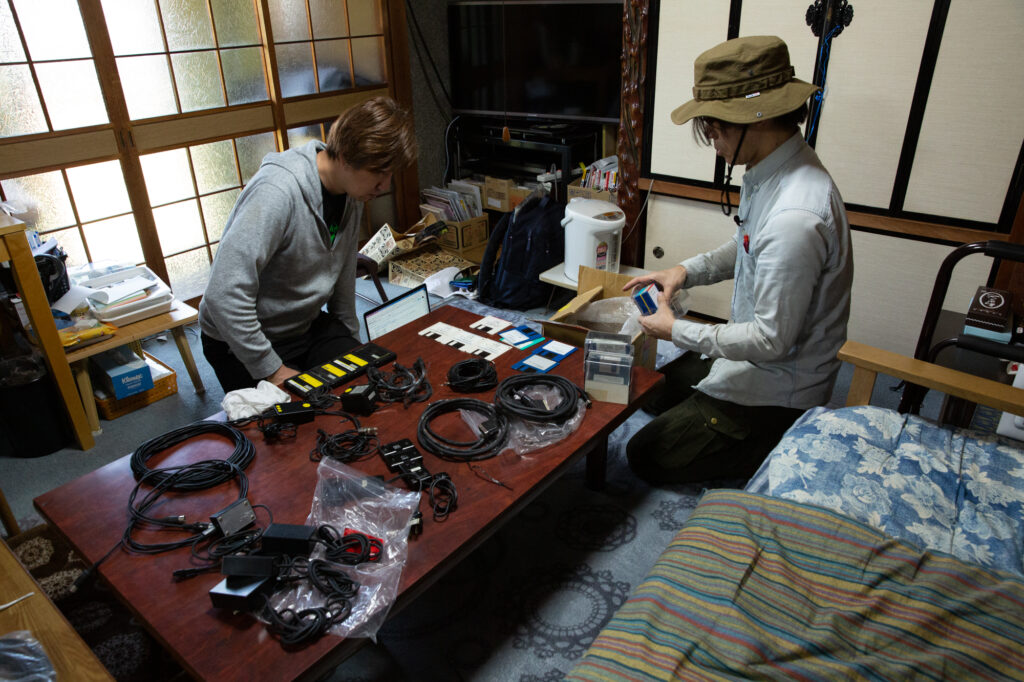
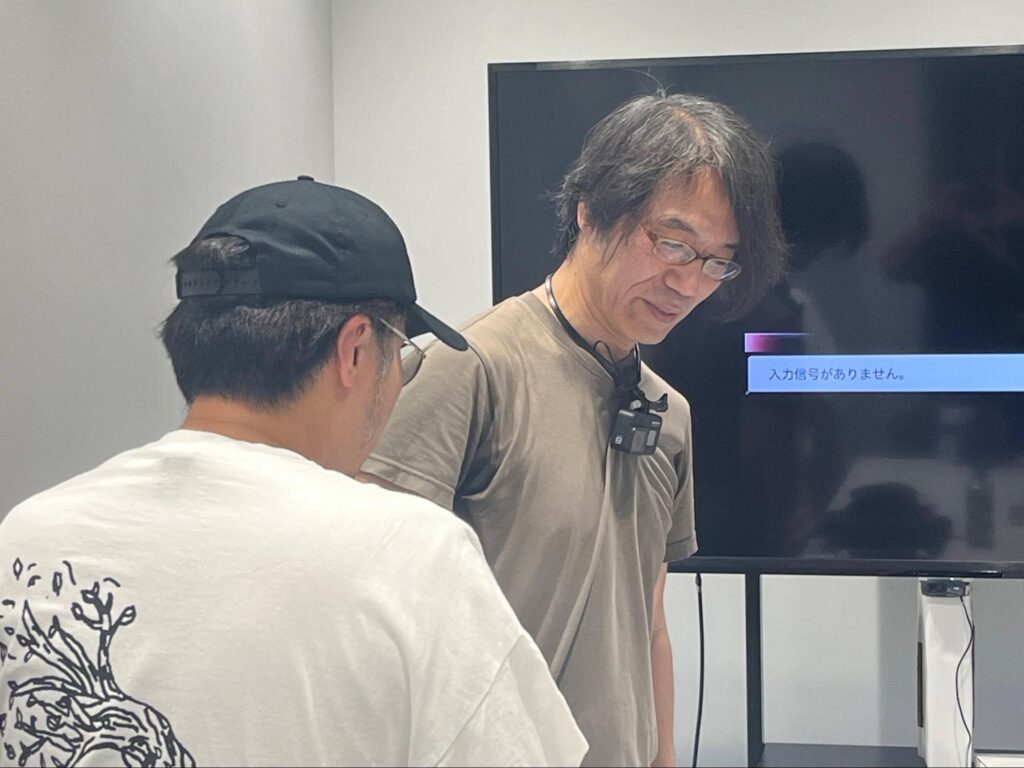
6. Project Members
- Director: Iwai Toshio
- Project Directors: Myokam Hiroko (Eizo Workshop), Hirota Fumi (CCBT)
- Assistant Project Director: Kobayashi Reina (CCBT)
- Technical Director: Tabei Katsuhiko (CCBT)
- Equipment Research / Technical director: Iwata Takuro (arsaffix)
- Equipment Condition Checkers: Ito Yuya (arsaffix), Kimura Yusuke (arsaffix), Nakaji Hiroaki (arsaffix)
- MSX Emulator Research: Miura Daiki (arsaffix / omororg)
- MSX Audio Recording / MIDI Data Recording: Ito Takayuki (CCBT)
- MSX Video Capture: Nakagawa Yosuke
- Photographers: Kawabata Kazutaka (Eizo Workshop), Sato Motoi, Harimoto Kazunori
- Assistant Photographer: Otsuto Masashi (CCBT)
- Media Art Studies 2023: Playing with Your Eyes Production Team: Iwai Roka, Oooka Hironori, Shimada Mei (CCBT), Hashimoto Norihisa, Hiramatsu Rui
- In cooperation with: Toshio Iwai Archive & Research, Eizo Workshop, Fujimura Satomi (Tokyo Photographic Art Museum), Tasaka Hiroko (Tokyo Photographic Art Museum), Kobayashi Maiko (Tokyo Photographic Art Museum), Chiu Yu-Hsuan (Tokyo Photographic Art Museum), Retro-Do, EMC Sekkei Co., Ltd., TASKO Inc., Tokyo Marui Art Co., Ltd., William Andrews, Sano Meiko, Akita Haruna, Yotsumoto Tomoko, Agency for Cultural Affairs
